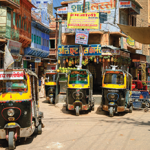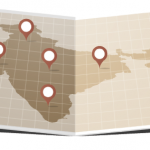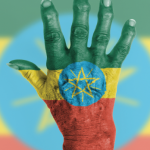PANLAR recently approved the creation of a patient registry of adverse events from biologics. These data may help build support for using biologics in a treat-to-target approach similar to that used in North America and Europe, he said.
In India, Late Referrals Are Problematic
In India, RA patients also tend to see a rheumatologist late in the disease process after significant joint damage has already occurred, said Anand N. Malaviya, MD, visiting senior consultant rheumatologist, A&R Clinic, ISIC Superspeciality Hospital in New Delhi. “Only about 19.5% of RA patients come to us in the early stages of disease. A large number of them are uneducated or poorly educated, and that makes a major difference” in their eventual outcome, he said. “Patients we see are quite disabled by the time they come to us.”
As in Latin America, India has a severe rheumatologist shortage—about one rheumatologist per 6 million patients—and existing rheumatology clinics are crowded. Most RA patients see orthopedists or alternative practitioners, such as Ayurvedics (practitioners of a form of traditional Indian medicine) and homeopaths, Dr. Malaviya said. Indians who are poorly educated lack awareness about RA, and also may be “highly suspicious of Western medicine” and wary of seeking rheumatologic care. These patients may not be referred to a rheumatologist until they develop joint deformities, he added. Patients may have to travel long distances to reach a rheumatology clinic, and many cannot afford the cost of transportation by bus, rail or air. “In India, transportation is user-unfriendly, especially for the disabled,” he added.
Medication cost is an even larger problem for Indian RA patients than transportation, Dr. Malaviya said. Fewer than 5% of Indians have health insurance of any kind, and there is no prescription drug coverage. “Biologics are out of the question for people earning $2 a day,” he explained. Physicians treating RA patients may lack an awareness of such concepts as Treat to Target or Disease Activity Score-28 (DAS-28) scoring, and some physicians may use the same DMARD dosage for every patient regardless of disease activity.
At presentation to his clinic, 46% of RA patients have high DAS-28 scores, and 38% have moderate scores, he said. “Patients are coming in severely deformed. What can we do? A lot!” he noted. Drugs like methotrexate, sulfasalazine and leflunomide are relatively cheap in India, making combination therapy “an excellent option” for controlling disease activity in RA, he said. A relatively high prevalence of type II diabetes mellitus makes high-dose corticosteroid use inadvisable in India, he noted. His New Delhi clinic is using electronic medical records technology to maintain patient data, and they are following a treat-to-target approach to try to lower DAS-28 scores among their patients, he concluded.
Registries Are Blossoming in the Middle East & Africa
In the Middle East and Africa, there is a wide economic disparity across the vast region, as well as a mix of highly disparate cultures, said Mohammed Hammoudeh, MD, chief of rheumatology at Hamad Medical Corp. in Doha, Qatar. In oil-rich countries in the Persian Gulf region, RA patients may be far more likely to have medical coverage or to afford medications, while in sub-Saharan Africa, healthcare is a luxury most cannot afford. In Eritrea, for example, annual per capita government expenditure on healthcare is only $12, he added. Other problems in sub-Saharan Africa include political unrest, which dismantles any government healthcare program, and high incidence of HIV. However, wealthy countries in the region have problems as well; higher rates of cardiovascular disease, obesity and diabetes are being seen in the Middle East, Dr. Hammoudeh said.
In Latin America, at least 5,000 specialists are needed to meet the World Health Organization’s care standard of one rheumatologist for every 100,000 people.
Functional outcomes among RA patients are generally poorer in this broad region than in more developed economies, and rheumatologists have found it impossible to follow EULAR guidelines to improve those outcomes, Dr. Hammoudeh said. “Across the region, there was low biologic use mainly due to cost,” he said. Overstretched rheumatologists have little time to measure disease activity or physical function scores. “There is a lack of assistants in clinics and a shortage of rheumatologists, especially in Africa. The priority is seen as higher for treating HIV and tuberculosis.” By contrast, in wealthy Qatar, 29% of RA patients are using biologics.



